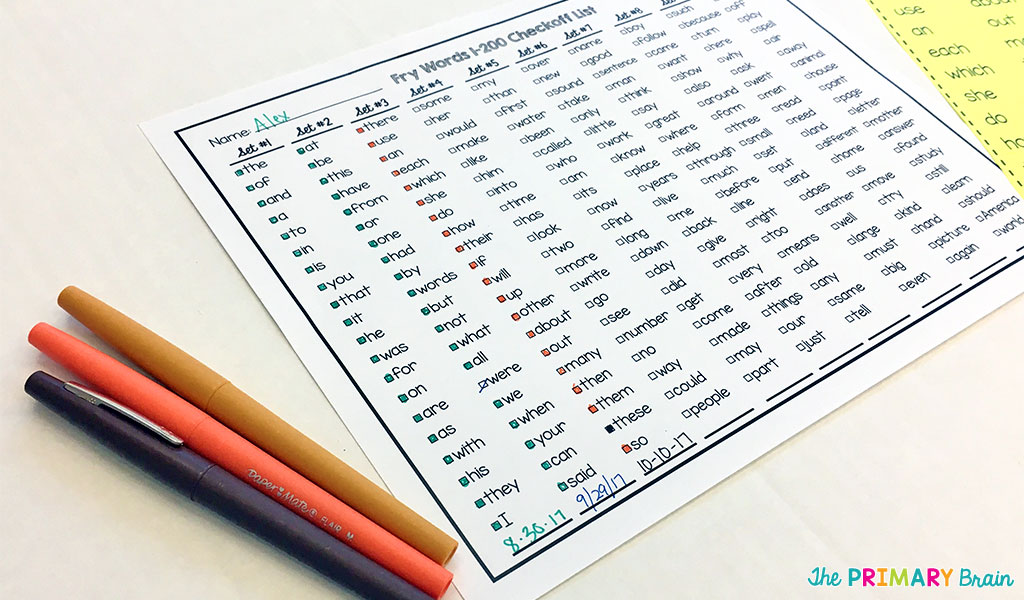How to Form Reading Intervention Groups

Do you ever find yourself looking at your class and not knowing how to form your reading intervention groups? This used to be a real struggle for me during the first few weeks of school. When I first started teaching, I was thrown into a classroom that did not have a consistent teacher for the first 6 weeks of school. I felt like I was pulling from all the resources I could find to put together a plan to teach my students. Learning how to properly use assessment tools to form my groups was a GAME CHANGER in targeting the instruction that each student in my classroom needs. During the first two weeks of school, I assess every single student using a phonics and a sight word assessment so I can begin targetting their individual needs. Then, I repeat these assessments at the end of each trimester, or as needed.
Phonics Assessment
As a first grade teacher, some students enter my first grade classroom with little to no letter sounds, while others are beginning to blend cvc words. Other students enter with strong reading fluency. However, regardless of their reading levels, they still need phonics instruction. It is easy to know where to begin teaching students who have gaps in their letter sound fluency, but I find that a phonics assessment is even more beneficial for students who are already beginning to read. Just because they can read a leveled decodable book does not mean that they can skip over phonics instruction. By giving a phonics assessment, you can find specific phonics gaps you can teach to improve their reading ability. Once I have a clear picture of the skills that my students need to work on, then I can begin to form guided reading intervention groups accordingly.
Depending on my district requirements for the school year, I give either the CORE Phonics Survey or the BPST II to every student in my classroom, regardless of their reading ability. Both assessments follow a similar pattern. You begin by assessing letter sound fluency. After completing all letter names and sounds, you will assess a student’s ability to read cvc words. The assessment slowly increases in difficulty by assessing words that target a specific skill such as blends, digraphs, cvce, long vowel teams, and more! Once you reach a child’s frustration level, you stop the assessment. Both of these assessments can be found online, or you can find the full CORE Phonics Survey and so many other fantastic teaching tools in the Teaching Reading Sourcebook.
How I Utilize This Data
Since the CORE Phonics Survey/BPST II tells me EXACTLY which phonics skills my students need to focus on, I use this data to break students into groups. I have a group that needs targeted instruction in letter and sound fluency. My second group is able to identify sounds, but they are still working on blending cvc words. My third group is working on blending sounds to read words with beginning blends. My fourth group is working on digraphs. My fifth group needs help with r-controlled vowels. My sixth group has mastered all the previously mentioned skills, but is now working on more difficult words.
Sight Word Assessment
The second assessment I give is a sight word assessment. It is important to begin the year with a clear picture of the sight words a student knows, so you know what to have the child practice first. We use Fry Sight Words in my classroom, so I created an easy to use Fry sight word checkoff sheet assessment. This really helps to give me a quick glance at where each student needs to practice. (Just fill out the form at the bottom of this post to grab this free assessment!)
Once I have identified the sight words a student needs to practice, then I can make a plan to help the student! I use a combination of Fry Word Bookmarks and Sight Word Boom Cards to target the words that the student needs. First, I check the assessment to see if there is a set of words where a student knows most of the words, but may have missed a word here or there. I assign these words using my Sight Word Boom Cards so they can practice the words individually. I like to assign 10 words at a time to each student for practice. As they master words, I just assign the next words they need based on the errors on the assessment. Second, I give a paper based bookmark for students to use to practice sight words. I identify the set of 20 Fry words that a student is ready to practice and give them a Fry Word Bookmark. This way, students have options for practicing on their bookmarks and on a device.
I hope these assessments help to give you a place to start when forming your reading intervention groups. Without having a proper plan in place, it creates a larger burden for you as a teacher to identify the reading needs within your classroom. If you want to read more about how I use the Fry Word Bookmarks in my classroom, be sure to check out my Using Bookmarks to Master Fry Words blog post.

This post may contain Amazon affiliate links. I earn a small commission each time someone makes a purchase through one of my affiliate links, which helps to support The Primary Brain blog. As always, I only recommend products that I love and all ideas shared are my own.
Written on February 7th, 2019 by Laurin Brainard